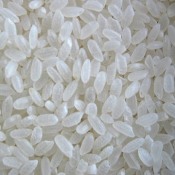
The commission has done well to remind us that the farm sector is still subject to strangulating controls that dissuade private investment in key areas, including logistics and storage.
The government's agricultural pricing policies, which have rendered minimum support prices (MSPs) the de-facto procurement prices, have also come in for sharp criticism for discouraging farmers from diversifying into high-value crops even while failing to keep food-price inflation down.
What should cause concern is that the challenge of food security continues to stare us in the face despite the generous funding of the agriculture and irrigation sectors, where Plan outlays have more than doubled in the 11th Plan compared to the 10th Plan.
Though agriculture accounts only for less than one-fifth of the country's gross domestic product (GDP), it still supports over 60 per cent of the nation's population. Only in the first year of the current Plan did the agriculture sector grow at a healthy 4.9 per cent.
Growth fell to 1.6 per cent in the second year and is projected to be around minus 0.2 per cent in the current year. There have been years of good performance, but it is unclear as to how much of this was due to good monsoons and how much was due to public and private investment.
It is in recognition of these facts that the prime minister has repeatedly called for a second green revolution and the government has spoken eloquently about investing more in agriculture.
Yet, the gap between performance and promise remains wide as the Planning Commission has once again shown. The mid-term appraisal document puts out a wide range of policy options on the menu like making the agricultural pricing system more market- oriented by delinking MSPs from procurement prices to abolition of levies, stock limits and curbs on export of farm goods.
Unhindered movement of agro-products across the country can help achieve the objective of creating an all-India single open market for agriculture as envisaged in the National Agriculture Policy adopted by Parliament during the previous term of the United Progressive Alliance (UPA).
In any case, the MSP system, as also the official grain procurement policy, is confined to a few states (where the public grain purchase network is in place) and to a few crops, chiefly wheat and rice.
For other crops, the MSPs are irrelevant. Thus, farmers in most parts of the country do not get remunerative prices for their produce. The 11th Plan's basic strategy for boosting agricultural output, as outlined in the original approach paper, envisaged improving farmers' access to technology and diversification towards higher value crops and livestock.
It had also stressed rationalisation of farm subsidies and efficiency-enhancement of public investments in the agricultural sector. None of this has actually happened. A major policy correction seems imperative.